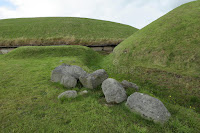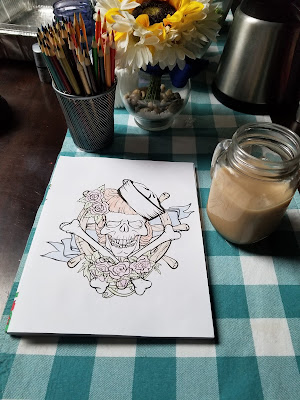Irish Faeries- Banshees and Changelings
Fun Fact Friday
Irish Legends
Since Saint Patrick’s Day is almost upon us, I thought I’d
dedicate this Fun Fact Friday to some legends from the Emerald Isle. No, I’m not talking leprechauns or The
Blarney Stone. I’m talking something a little on the darker side: Faeries.
When I say “faeries, I don’t mean the adorable little winged
things your kid wants to be for Halloween every year that they’re not a
princess. I mean the mischievous creatures from Celtic mythology that were
definitely not as nice as their Disney-created counterparts. More specifically,
I want to talk about two of the most dreaded types of “fae folk:” banshees and
changelings.
The Banshee
The term “banshee” comes from the Gaelic for “woman of the
faery mound” or simply “faery woman,” so while some legends describe her as a
spirit, others put her in the category of “faeries.” The “faery mound” refers to what are thought
to be burial mounds found dotted all over the Irish countryside.
Tumuli (or faery mounds) can be found all throughout the Irish countryside.
The banshee is sometimes described as taking the form of an
old woman dressed in rags. Other times
she is seen as a beautiful woman. Which
sucks, because since you wouldn’t know what she looks like, you wouldn’t know
to avoid her until it’s too late. The piercing,
wailing shriek that comes out of her mouth has been said to foretell death to
anyone who hears it. Some legends say it
is the death of a family member, others say it is the death of the one who
hears her cry.
The Banshee in both forms: beautiful woman and old hag
One of the stories of the banshee originates from the
tradition of wailing or “keening” at funerals. In Ireland and Scotland, it is
customary for a woman in the family (or even a paid professional) to cry or “keen”
at a funeral as a vocal tribute to the dead.
It is said that sometimes the faeries cry for someone whose family
member has died, even if they were far away, so thus the cry of the banshee was
the first sign that their loved one had died, even if they hadn’t received the
news yet. Some legends say that the
banshee only wails for those of pure Irish blood, and those families with
surnames starting with “O” or “Mac” each had their own banshee to wail for
their loved ones.
Some stories say that the banshee is actually trying to warn
of a dangerous situation when she wails.
If someone is about to go do something where they may not make it out
alive, the banshee will wail as a sign of warning.
Some think that there is more than one banshee (25 to be
exact) led by Aibell, who is said to be their supreme ruler. When someone of
great importance dies, it is said that all the banshees wail for them at once.
Changelings
Now that I’m a mom, probably one of the creepiest stories in
Celtic folklore is that of the changelings.
According to legend, faeries cannot often reproduce without yielding deformed
offspring. Faeries are also said to be very vain, and thus enjoy having perfect
babies. So, they disguise their
Quasimodo-like infants as perfectly healthy human babies and switch them in the
middle of the night. Supposedly the only
clue to whether or not your kid has been switched with a changeling is that
they experience no joy until there is misfortune or tragedy in the home.
Other legends say that the faery elders take
the place of the infant so they can be coddled by human parents before taking
the place of another infant. Faeries are said to be vulnerable to iron, so
the only way to prevent your child from being snatched by a faery was to place
open iron tongs or scissors by the child’s bed at night. I read that this is unfortunately how some cultures
explained a young child having an developmental disability or a debilitating illness.
 |
| What the faeries leave behind... Funny, that's what my little one looks like when she's hangry. Explains a lot. |
Well, there you have it folks! Something to give you
nightmares after you pass out from chugging one too many pints of Guiness. Happy
St. Patty’s Day, friends!







Comments
Post a Comment